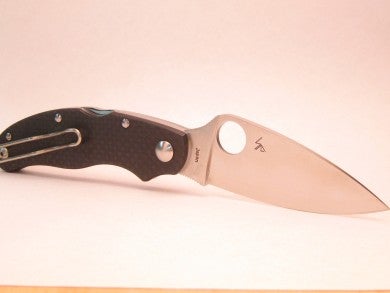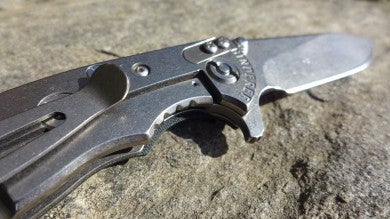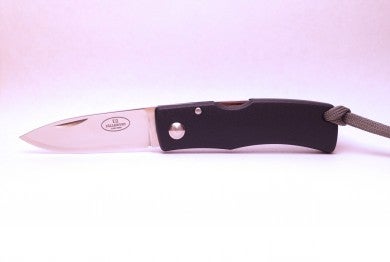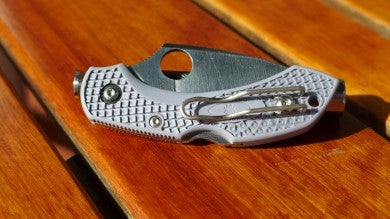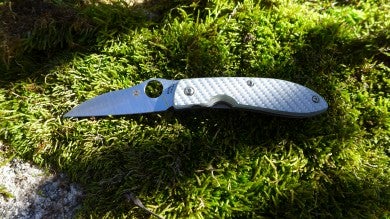Six Upgrade-Worthy Blade Steels
Tony Sculimbrene 02.09.15
)
If you like knives, blade steel is important to you. Blade steel is the heart of a knife, and good blade steel is very important. But steels change and new steels are released on an almost yearly basis. Most steels start out in cutting tools for industrial applications. A small handful, S30V, S35VN, and Sandvik’s 14C28N, started life out as steels designed for the cutlery industry.
The real question is whether a particular steel is worth the cost of upgrading. There are a lot of good, common steels out there. 1095, A2, and O1 are excellent high carbon steels. They will hold an edge for a long time, but develop coloration. VG-10, AUS8, D2, and 154CM are all good stainless steels, but they are no longer top tier choices. For some, the tried and true steels are all you need. Lots of folks get by with 1.4116 steel found in their Swiss Army Knives. Five years ago the entire knife community was held by the sway of S30V. But as time has passed, the once king of the “super steels” has been overtaken by a host of amazing alloys. If you want to see what is possible in cutlery steel, here are a few interesting choices.
ZDP-189
This is my all-around favorite steel for EDC purposes, and I have talked about it extensively, pretty much everywhere. Its capacity to hold an edge is bonkers crazy. When I started the blog almost five years ago, the upgrade from VG-10 to this steel was huge and 100% noticeable, even by a noob. Now, when there are bevy of choices substantially better than VG-10, the difference isn’t so striking, but it is still compelling.
Many of the evergreen Spydercos (knives always produced, like the Endura, Delica, and Dragonfly) are made in an upgraded ZDP-189 blade. The cost is usually $20-$30 more. In my opinion this is always worth it, especially if you don’t perform a lot of high impact tasks.
M390 (and its Brothers by other Mothers–20CV and CTS-204P)
This steel has 95% of ZDP-189’s hardness, but with better corrosion resistance and toughness. It won’t chip, it won’t dull, and unlike ZDP-189, M390 takes an amazing, gleaming high polish and holds it. ZDP–189’s weaknesses have always been in the form of stain tendencies and chipping, and M390 fixes both. Also unlike ZDP-189, M390 is widely available, though it is pretty darn expensive.
M390 can be found on a few Benchmades, including the newly released spec monster called the Valet, and on the upgraded Barrage. It is also the upgrade option for the higher end ZT knives. Generally, the price is significantly more than the regular ZTs, which run the already quite good Elmax. In the Barrage it is worth it, as the price is not that much more. In the ZT’s, it’s probably not quite as big a deal because Elmax is quite good already.
SG2 a.k.a. SGPS
Another high hardness Japanese steel, SG2, is a steel I’d like to get to know better. After my experience with it on the Fallkniven U2, I was very, very impressed. When buying a Fallkniven, you sometimes have the chance to go from VG-10 and SG2. That is an upgrade that in my opinion is always worth it.
In very rare instances, you will find SG2 on a custom. When you do, know that it is something special. SG2, like most Japanese steels, isn’t usually shipped out of Japan.
Super Blue and White Steel
Both super blue and white steels are iron sands based steels, and both are exceedingly hard. The pair are the only non-powder steels on the list, and they are really different from just about anything else on the market. Their ability to retain an edge is like ZDP-189 and M390, but what distinguishes them from everything else is how easy it is to get that edge. A favorite among hardcore steel junkies, Super Blue seemingly comes back to razor sharp telepathically. I had and gave away (part of a Wounded Warrior Project giveaway) a Super Blue DF2 and it was extraordinary.
Again, a lot of Spyderco evergreen knives were available as sprint runs in Super Blue. It is definitely worth looking for them, but the prices have gone crazy recently. If you can find one at retail or around 10% more, it is worth it. Beyond that, go for it if you are a collector. Additionally, you can find axes in White Steel on a lot of Japanese tools. They are crazy expensive (especially if you thought the GB axe I reviewed was pricey) but the White steel is even purer and cleaner than Super Blue. All that improvement costs money.
M4
Blade Sport, the worldwide cutting competition, has been great for steel junkies. We get to see which steels really perform. And like MMA, what started out as a diverse field of different competitors has been whittled down to one through intense competition. Brazilian ju jitsu (and styles like it) have dominated MMA, and M4 has dominated Blade Sport.
M4 isn’t the newest steel on the market, but its use in cutlery is new and boy is it good. I love the edge retention, but I also like how aggressive the steel cuts. There is a metallurgy answer, something to do with carbides, but the long and short of it is M4 cuts like a demon and can do so for a very, very long time. In a big knife it’s awesome, and in a little folder like the Spyderco Air, it’s delightful.
W2
This is a high carbon steel and an old one at that. It is a very good steel, similar in composition to 1095 with more vanadium added. Its carbon content is close to that of D2 (W2 goes up to 1.5% carbon and D2 has 1.55%), making it quite hard and wear resistant. It’s hard to find but is preferred by folks making large knives and swords. It’s big trick is that it takes well to differential heat treats (allowing for a harder edge and softer spine) and produces a spectacular hamon.

Discovering new steels is one of my favorite parts of gear. This list is just the tip of the iceberg. I’d love to try a knife with titanium based blades–either SM100 or Beta Ti. I am also a fan of 3V in fixed blades. The ultra-tough S7 seems to hold promise (though I don’t see much of an advantage over 3V), as does PSF27, a powder metal D2 relative. I also really like S35VN, CTS-XHP, and Elmax, though they are not as exotic as the steels above. If you want to try out some crazy steels, the Spyderco Mule project is definitely worth a look. Who knows? You might find your new favorite.
